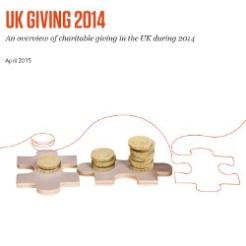The total amount given to charity by individual donors was £10.6bn, according to research from the Charities Aid Foundation.
UK Giving 2015 – an overview of charitable giving in the UK during 2014 is the first report since CAF changed the methodology to include giving from sponsorships, other types of social action and also looks at barriers to giving.
CAF says the figures are not directly comparable to the previous year, but that it has "undertaken a recalibration exercise in an attempt to retain a broad historical trend-line". This projection suggests a 4 per cent drop in donations, adjusted for inflation, from £11bn in the previous year to £10.6bn in 2014.
CAF says the study captures data four times a year, instead of three times, and the sample size has grown from around 1,500 to just over 5,000. The report is now based on the calendar year rather than the financial year and CAF has recalibrated and adjusted for inflation its historical data to give an overview of trends.
The recalibrated figures suggest that giving in real terms peaked in 2005 at £13.2bn, before falling to £10.7bn the following year. It then rose again to £13bn in 2010 before falling to £11.2bn in 2011, and £10.2bn in 2012.
In 2014 64 per cent of respondents said that they had given to charity in the last year, with 40 per cent saying that they had done so in the last four weeks. Some 45 per cent said that in the last year they had donated goods to charity and 35 per cent said that they had sponsored someone.
Just over one-fifth said that they did not give money or do any of the other listed social actions.
John Low, chief executive of CAF, said: “Britons are inherently generous and it’s great to see so many people continuing to give up their money, their belongings and their time, or sponsoring others to help the causes closest to them.
“UK Giving is now bigger and better, looking far beyond the financial side of being charitable to explore the who, what, how and why of our support for charities across the country.
“Charities clearly need to do more to motivate certain groups of society to get involved with charities in their communities, especially younger men. Fundraisers such as Movember and Tough Mudder have gone some way in catching the imagination of this group over the last few years, but there is clearly still some way to go.
“Many people remain concerned that the money they donate may not be used to best effect, and charities must ensure they are properly communicating the achievements of their work to the people whose funding make it possible.”
Giving trends
The study found that women are more likely than men to engage with charities with almost two-thirds participating in one of the activities in the past month, compare to 52 per cent of men.
Those in the youngest age bracket (16 to 24) were least likely to have participated in the previous month, 42 per cent, and those that are aged 45 to 65 were most likely to have participated in some way, 63 per cent.
The report notes that there was a spike in direct donation from young people in August, at the peak of the Ice Bucket Challenge phenomenon, with 32 per cent donating then compared to an annual average of 26 per cent.
According to the study the typical amount given in 2014 was £14 and the typical amount given as sponsorship was £10.
Medical charities attracted the greatest proportion of givers, with one third of people giving to medical causes. This was followed by children’s causes, 30 per cent, hospitals 25 per cent and animal causes at 21 per cent.
Although the proportion of people giving to religious causes was 12 per cent, religious causes had the largest share in terms of monetary value, accounting for 14 per cent of all donations. This can be explained by the typical donation to religious causes being higher, at £20, than the overall average.
Cash is the most popular donation method, with 55 per cent of respondents using the method in the last year. This was followed by direct debit and raffles/lottery, which were used by 30 per cent and 27 per cent respectively.
Some 15 per cent reported using online channels and 11 per cent used text donation. Just 2 per cent used payroll giving and 9 per cent used cheques.
Two thirds of 16 to 24 year olds used cash to donate. They were less likely than other age groups to use direct debit and raffles/lottery but more likely than other age groups to donate online, almost one fifth reported doing so in the last year and by text, with 13 per cent saying that they had used that channel.
Barriers to giving
All participants in the survey were asked about the barriers to giving and 70 per cent agreed with the statement: “If I knew how money was directly helping, I would feel more inclined to give to charity.”
Some 68 per cent said there were too many charities making it difficult to decide who to give to.
Just over half the respondents said that they were worried about charities asking them for more money. Almost one-quarter said that they didn’t think giving to charity made a difference.
According to the survey 32 per cent of donors give regularly, either through direct debit or payroll giving. More than two-thirds said that giving on an ad hoc basis gave them control over their giving, and 60 per cent said they needed to feel confident that their details were secure and 52 per cent said that they already give enough.









